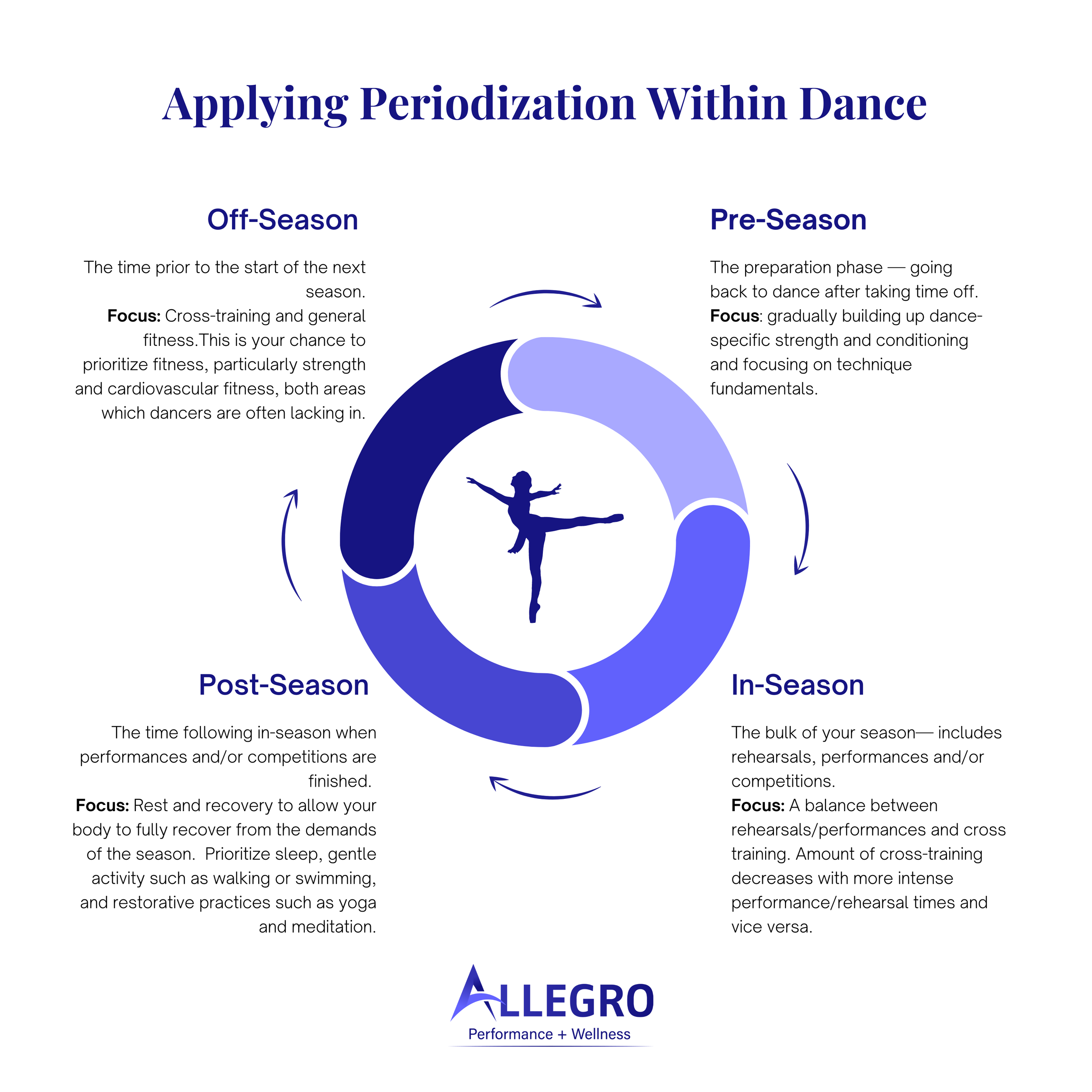Periodization – what is it and how can it be applied to dance?
Periodization is a concept that is commonly used in sports, but remains largely absent in the dance world. It’s starting to gain some traction with certain professional companies, but is still under-utilized (or non-existent) in the studio and competitive dance scene.
Periodization is the systematic planning of athletic/physical training through a specific pre-determined timeframe (usually a season or a year). This is often referred to as a training cycle. The goal is to reach the best possible performance at the most important time(s) of the year – ie ‘peak’ for the most important performances, competitions etc. Periodization breaks up the training cycle into phases throughout the season/year, each of which have a specific goal and focus.
Pre-season
Pre-season is the preparation phase of the cycle. It occurs when coming back to dance after a break or time off (off-season). The focus during pre-season should be on gradually building up dance specific strength and conditioning. It is also a good time to focus on technique fundamentals. Pre-season should be at least 6 weeks, but in some cases may be even longer than that depending on the total length on the season as well as the length of the off-season.
In-season
Pre-season is followed by in-season. This will make up the bulk of the dance season and includes rehearsals and performances (competitions). The focus while in season should be on finding a balance between rehearsals/performances and cross-training. During periods of time that are heavier for rehearsals/performances, cross-training should be lighter (and vice versa)
Depending on the length (and intensity) of the in-season, incorporating periods of tapering and/or de-loading may be necessary. This is the systematic reduction of training duration & intensity combined with an increasing emphasis on technique work, recovery and nutritional intervention. De-loads occur regularly throughout the season to break up training blocks, while tapers typically occur immediately before performances/competitions.
Post-season
Post-season is the time immediately following the conclusion of the season, when performances & competitions are finished. The main focus during post-season should be rest and recovery. This is a time to prioritize sleep, gentle activity such as walking or swimming, and restorative practices such as yoga and meditation. In an ideal world, the post-season should be at least 2 weeks long, but this may vary depending on the total length of the season.
Off-season
Off-season is the time between the end of post-season and the start of the next pre-season. The focus during off-season should be on base training and general fitness. For dancers, this is the time to prioritize strength training and cardiovascular fitness. The off-season should be at least 6 weeks long, but 8 to 12 weeks would be more ideal. This is probably a lofty goal, but one that would see dramatic improvements in dancer health and wellness.
Does your studio or company incorporate periodization into their schedule?
Want to learn more about periodization? Check out my periodization webinar recording below.


